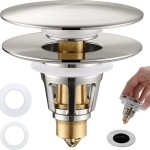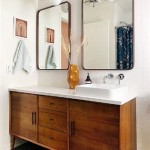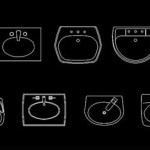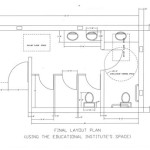The Bathroom Sink of the 1950s: A Design Evolution
The 1950s was a decade of significant transformation in American design, with a distinct shift towards modernism and functionality. This era brought about a revolution in bathroom design, and the humble bathroom sink was no exception. While sinks from the 1940s and earlier often exhibited ornate designs, the 1950s saw a move towards streamlined, minimalist aesthetics, reflecting the growing influence of mid-century modern design principles. The bathroom sink of this era became a symbol of the modern, efficient, and comfortable lifestyle that was taking hold in American homes.
Key Features of 1950s Bathroom Sinks
The bathroom sinks of the 1950s were characterized by several distinct features that set them apart from their predecessors. The most notable of these was the widespread adoption of porcelain enamel as the primary material for construction. Porcelain enamel offered a durable, easily cleanable surface that was resistant to stains and scratches. This made it an ideal choice for a high-traffic area like the bathroom, contributing to the overall sense of hygiene and cleanliness that was highly valued in the 1950s.
Another defining characteristic of 1950s bathroom sinks was their streamlined design. Gone were the elaborate curves and decorative flourishes of earlier eras. Instead, the focus shifted towards clean lines, simple shapes, and a minimalist aesthetic. This trend reflected broader design movements of the time, such as the Bauhaus and Scandinavian design, which emphasized functionality and simplicity. The sinks typically featured rectangular or oval basins with integrated countertops, creating a seamless and uncluttered look. This minimalist approach reflected a growing appreciation for efficient use of space and a desire for a clutter-free environment.
The integration of functionality with aesthetics was a hallmark of 1950s design, and this principle extended to bathroom sinks as well. The sinks were often equipped with practical features like built-in soap dishes, toothbrush holders, and towel bars, streamlining the bathroom experience and maximizing space utilization. These elements contributed to the overall sense of organization and efficiency that was highly valued in the post-war era.
Color and Material Choices
The color palette of 1950s bathroom sinks was largely influenced by the design trends of the time. White remained a popular choice, reflecting the emphasis on cleanliness and hygiene. However, other colors, such as pastel shades of pink, blue, and green, were also incorporated into bathroom design, adding a touch of vibrancy and personality to the space. These colors reflected the optimistic and cheerful atmosphere of the era, and they were often used in combination with chrome fixtures and accents, creating a visually appealing contrast.
The use of materials also reflected the aesthetic sensibilities of the 1950s. While porcelain enamel remained the dominant material for sinks, other materials such as stainless steel and chrome were also gaining popularity. Stainless steel, known for its durability and modern look, was frequently incorporated into sinks alongside countertops, offering a sleek and contemporary aesthetic. Chrome fixtures, like faucets and towel bars, were chosen for their polished, reflective properties, adding a touch of elegance and sophistication to the bathroom. These materials reflected the growing emphasis on modern technology and industrial design, which was also reflected in other aspects of home furnishings and appliances.
The Evolution of Design
As the decade progressed, the design of bathroom sinks continued to evolve. New innovations like the pedestal sink, with its elegant and space-saving design, gained popularity. This type of sink offered a sleek and contemporary look while minimizing the visual clutter often associated with traditional vanity sinks. The pedestal sink became a symbol of modernity and sophistication, appealing to homeowners who sought a more streamlined and elegant bathroom design.
The 1950s also saw the emergence of new materials and manufacturing techniques. Laminate countertops, known for their durability and affordability, became a popular alternative to traditional marble or granite. These countertops provided a smooth, easy-to-clean surface that fit well with the minimalist design aesthetic of the era. The development of new molding and manufacturing techniques allowed for the creation of more intricate and complex sink shapes, opening up new possibilities for design and functionality.

Decoração As Tendências Por Décadas Anos 50 Retro Bathrooms Vintage 1950s Home Decor

1950s Bathroom Redecoration Mid Century Modern Style

Vintage Bathrooms Bathroom Accessories Luxury Sink Design

Updating Our 1950s Bathroom With Style Checking In Chelsea

1950 Vintage Crane Yorkshire Bathroom Sink Dea Machineries

50s Bathroom Retro Pink Vintage Bathrooms Shabby Chic

1930 S Through 1950 Standard Lavatory Pedestal Sink Prop Al Dea Bathroom Machineries

Retro Inspiration Nostalgic Bathroom Designs And Styles From The 1950s Rare Historical Photos

1950s Wall Mount Sink With Chrome Legs At 1stdibs Bathroom Sinks 1950 For Antique

12 Vintage Bathroom Sinks From American Standard In 1955 Retro Renovation







